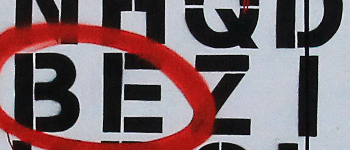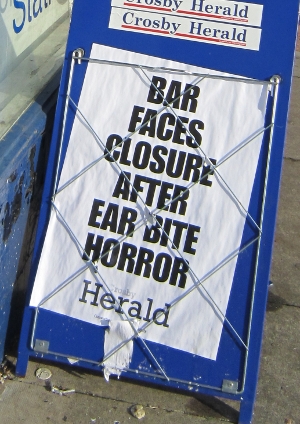The biggest online news this week has to be Google’s e-bookstore launch. Admittedly, this is bigger news in the US than it is anywhere else, but there are hundreds of public domain works available globally from the get-go. I gave the web-based version a try on my netbook, since it’s free.
Sadly, I have to report that the quality of the e-books is extremely variable; Wilkie Collins’ The Woman in White, for example, is represented by a poor-quality scan of a much-abused library copy, and is not adaptable to smaller screens. To be fair, there is a warning with regard to the optimal screen size on the book’s homepage; but it would have been nicer of Google to ensure that everything in their bookstore was available in their own e-format, which does work nicely on a netbook, prior to launch. These scanned books aren’t even capable of providing a working index; and the downloadable PDF version of The Woman in White is still worse, in that both body text and image are missing from the first page(!). Best to stick with the Gutenberg Project for the poorer quality offerings, then. However, the properly formatted e-books are a whole different matter.
Where Google’s real e-books score over Gutenberg is that the text is broken down into screen-sized chunks, so there’s no frantic scrolling and no chance of losing your place; plus you don’t need to stay online to read a novel. Once the entire book is cached, you can disconnect and walk away from your modem if you like–useful when your internet connection is sporadic, or when it’s charged by the minute, or both. (I’m looking at you, East Coast!) If you stay connected while you’re reading, though, Google will ‘remember’ which page you last read and open the book at that page the next time you access it. The service would be better still if Google would make it possible to download e-books in their proprietary format for local use via the browser, and synch on connection to provide the page-keeping service; at present you need an initial internet connection for a few minutes every time you want to access a book, regardless of whether you already cached it.
All in all, Google’s e-bookstore is not quite an alternative to the mighty Kindle; but it does have the potential to offer another use for a laptop or netbook, and I definitely will be using it on long train journeys!
Some of the authors we regularly follow on Inflatable Ink have their own news, too. May I offer heartfelt congratulations to Susan Dennard of the Let The Words Flow team, who happily announced her first publishing deal this week. Scott G F Bailey hasn’t quite got that far yet; he shared with the world his struggle to synopsise a complex novel which is full of ambiguity. Cheryl Ossola, meanwhile, had a productive time on her weekend retreat, and posted a nice piece about the lessons learned.
Bad writing happens to all of us from time to time (and to me today, by the looks of things.) Elizabeth Spann Craig blogged on Mystery Writing is Murder about why you should keep on writing regardless of quality. Natalie Whipple concurred, given that editing is a primary function of the author. Janice Hardy approached the subject of poor writing in a different way, focusing on the plotting problem she termed “Nice Writer Syndrome“. Kristen Lamb went one further with the subject of plot as part of her series on structure, stripping back to fundamentals to illustrate why there’s no point in reinventing the wheel.
PaperbackWriter Lynn Viehl published an article, aimed at this year’s NaNo participants, which effectively covered the basics of editing in a single helping. Janice Hardy used her Re-Write Wednesday slot to focus on cutting back the number of characters in those early drafts. Others were more concerned with the quality of the characterisation, with Alexandra Sokoloff musing on the essence of character and Elizabeth Spann Craig looking into the difficulties that lie in creating an enigmatic fictional personality. Sarah LaPolla of Glass Cases posted a thoughtful piece, too, in which she compared writing about emotion with method acting.
Over at the Self Editing Blog, John Robert Marlow offered a helpful guide to putting together a beatline as a fiction-writing tool. He used The Matrix to illustrate the technique. Juliette Wade wondered on her blog, TalkToYoUniverse, whether–and why–and when–writers should follow the rules, and when it might be OK to break them. And in a guest post on Men With Pens, one Tim Brownson shared an unusual approach to workload prioritisation that has particular resonance for writers. Be warned, though, this does involve nose-blowing.
And finally: The Guardian are publishing a podcast in which an established author reads one of their favourite short stories, every day between now and Christmas. Enjoy!




